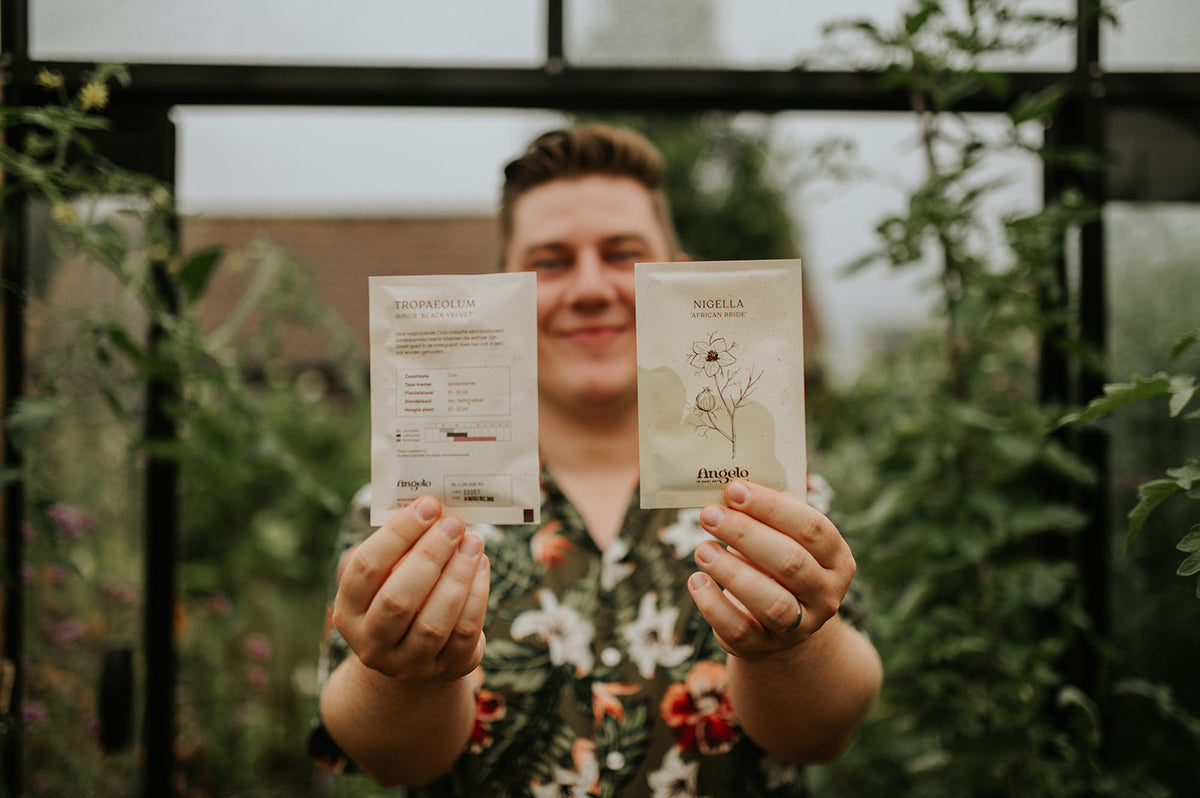
This is how you make sure seeds always sprout
|
Tijd nodig om dit artikel te lezen: 2 min
|
Tijd nodig om dit artikel te lezen: 2 min
Every day, followers ask me questions on social media about plants or gardening chores. I often get asked why some seeds don't germinate. There are a few crucial things when you start sowing. Read carefully what is on the seed packet, determine whether the seeds are light germinators or dark germinators, and use the right soil.
The first and most important tip when sowing: read the instructions on the seed packet. That sounds super obvious and yet I notice that many people forget to look at the packet.However, there is a lot of information on it that is crucial if you want your seeds to germinate:
“Not all seeds can be sown in the same way. Tip number 1: follow the instructions on the seed packet.”
Even before you start filling the first pot with soil, you should do something else: determine which type of germinator you are going to work with.I'll say it again: not every seed germinates in the same way.
Some seeds need light, others cold, and still others prefer darkness. On our seed packets, we always indicate what kind of germinator you're dealing with. (If you have a different packet that doesn't state this, it's best to look it up online.) What's the difference between a light germinator, dark germinator and cold germinator?
These seeds need sunlight to germinate and are best sown superficially. So don't cover them with soil, but do press them down a bit so they make contact with the soil.
Examples of light germinators:
Antirrhinum majus or snapdragon, Cosmos bipinnatus, Delphinium consolida or larkspur, Scabiosa atropurpurea or pincushion flower, Zinnia elegans.
It almost goes without saying: in contrast to light germinators, these seeds do not want any sunlight to germinate. You should therefore cover them with a layer of soil. The annual Phlox goes a step further and even wants to be covered to germinate properly.
Examples of dark germinators:
Calendula officinalis or marigold, Helianthus annuus or sunflower, Lathyrus odoratus or sweet pea, Tropaeolum majus or nasturtium.
Besides light, temperature also influences the germination of seeds. Cold germinators want — surprise — cold to germinate. The lower temperature breaks the dormant phase in which the seed is.
Examples of cold germinators:
Delphinium consolida or larkspur, Cleome or spider flower, teasel and poppy.
Did you know that we also have a well-stocked YouTube channel? With more than 450 videos, we have a large database of information.Be sure to check out YouTube and subscribe, so you can stay updated on the latest videos.
In this video, I'll tell you how to start with sowing. I share 4 tips, so you don't have to make any mistakes.
Quality, peat-free soil is the basis of everything. Sowing or cutting soil is lighter than regular potting soil and that's necessary for the delicate roots to find their way. In addition, there are fewer fertilizers in sowing soil, which in turn provides a neutral growth environment for your seedlings.
I'm sorry, but the text you provided is not in Dutch and it seems to be a series of HTML tags without any actual content to translate. Could you please provide the Dutch sentences you want to be translated into English?